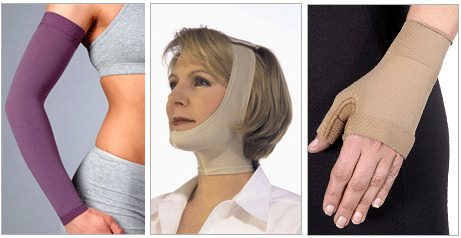Questions Regarding Compression Garments
When you need to use compression leg sleeves as you recover from an injury or when you want to use the sleeves to improve your performance at an athletic event, you are likely to have many questions regarding the compression garments. Review these questions before you make a purchase:

What is the main purpose behind wearing the compression garment?
When you identify the specific reason for wearing the compression clothing, then you will be better prepared to choose the size and material of the garment. For example, athletes often choose a top quality leg sleeve which can stand up to a lot of wear and tear. A person who is suffering from lymphedema may be more interested in attractive arm sleeves than the durability of the material.
How do the garments work?
Compression garments apply pressure to areas of the body in order to direct the flow of blood from the extremities toward the heart. This prevents swelling, reduces the danger of blood clots, and might increase the amount of oxygen in the blood. Graduated compression stockings put the most pressure at the ankle and gradual decrease in pressure up the rest of the leg. This prevents the blood from pooling at the ankles or feet and pushes it back toward the heart.
Do you have a prescription for the compression garment?
With a prescription you will have the specific information you need to order the right garment. Your doctor may specify whether you need a set of support hose, non-elastic compression stockings, or another type of leg compression garment. The same type of specific information may be gained regarding arm sleeves and gloves.
How can you be sure that you get the right fit?
It is clearly very important to get a compression garment which fits correctly. If the garment is too restrictive, then you might experience tissue damage and a certain degree of discomfort. On the other hand, a compression garment which doesn’t provide compression won’t be effective.
In order to be sure that the garment fits appropriately, you should work with your doctor or medical professional. A light dusting of cornstarch or some powder might make it easier for you to slip the compression garments on. Any bunching or rolling can create areas with too much pressure.
Will your insurance company provide coverage for these garments?
One of the most important things you can do in order to be sure that you are purchasing a garment which your insurance will cover is to contact your insurance company. You will be able to ask which compression garments are covered and whether you need to meet any conditions in order to obtain coverage. You will also be able to ask what, if any, documentation you will need to turn in.
If you are initially denied coverage, consider working through your doctor to appeal the denial. In some cases, your doctor’s input may be enough to convince the insurance company that compression garments play an important role in preventing further injury.
Ask First
Your doctor and the supplier of the compression garments will have additional information for you to review as you consider the types of garments available. Your doctor has probably worked with a few different types of compression garments and may be able to recommend a supplier with a good reputation for quality and customer service.
Whether you need support hose or compression gloves, asking questions first will help you to get the garments which are most effective for you.
This post was written by Don Johnson.



